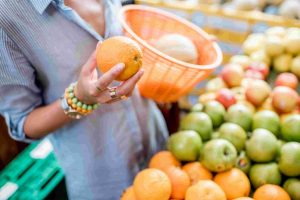How Can We Solve The Food Crisis?

As a food security expert, I have spent years researching and analyzing the current global food crisis. It is evident that this issue cannot be solved overnight but requires a long-term strategy to ensure sustainable access to nutritious food for all.
The world’s population is expected to reach 9 billion by 2050, which means we need to increase our food production by at least 70%. However, with climate change, extreme weather events, and limited resources such as land and water, achieving this goal seems impossible.
To tackle the food crisis, we must focus on three main areas: reducing waste, increasing productivity while protecting natural resources and ensuring equitable distribution of food.
Food waste accounts for about one-third of all produced globally; it can be reduced through better storage techniques and more efficient transportation systems. Increasing agricultural productivity should not come at the cost of degrading natural resources such as soil or deforestation.
Sustainable agriculture practices are essential in maintaining healthy ecosystems while producing enough food to meet demand. Lastly, addressing inequalities in access to food is crucial since those living in poverty often lack sufficient nutrition due to high prices or low availability of locally grown produce.
By focusing on these three areas concurrently, we can work towards solving the global food crisis sustainably.
Reducing Food Waste
Reducing food waste is crucial in addressing the global food crisis. According to a report by the United Nations, approximately one-third of all food produced globally goes to waste each year. This means that almost 1.3 billion tons of edible food are wasted annually, while millions of people worldwide suffer from hunger and malnutrition.
To combat this issue, composting solutions can be implemented at both household and community levels. Composting allows for organic material such as fruit peels and vegetable scraps to be turned into nutrient-rich soil that can then be used for gardening or farming.
Community engagement is also vital in reducing food waste. By educating individuals about proper storage techniques and expiration dates, we can prevent unnecessary spoilage of perishable items like fruits and vegetables. Additionally, donating excess food from restaurants or grocery stores to local charities is an effective way to redistribute surplus resources to those in need.
Implementing Sustainable Agriculture Practices
Reducing food waste is an important step in addressing the food crisis, but it’s not enough. We also need to implement sustainable agriculture practices, such as regenerative farming and urban agriculture. These approaches can help us produce more food while minimizing harm to the environment.
Regenerative farming involves using natural processes to improve soil health and reduce reliance on synthetic fertilizers and pesticides. This approach has been shown to increase crop yield over time, while also promoting biodiversity and reducing carbon emissions.

Urban agriculture, on the other hand, allows for fresh produce to be grown in cities, reducing transportation costs and increasing access to healthy foods for urban populations.
To truly solve the food crisis, we must embrace a holistic approach that addresses both production and consumption patterns. Here are four ways we can do this:
- Invest in small-scale farmers who use regenerative techniques
- Support community gardens and urban farms
- Promote plant-based diets to reduce demand for resource-intensive animal products
- Encourage local sourcing of food to reduce greenhouse gas emissions from transportation
By taking these steps, we can create a more resilient and equitable food system that benefits everyone – from farmers to consumers.
Ensuring Equitable Distribution Of Food
One key factor in solving the food crisis is ensuring that all individuals have access to nutritious and affordable food. This means addressing issues of food insecurity, which can be caused by a lack of income or physical proximity to grocery stores.
One solution is the implementation of community gardens in urban areas, allowing for fresh produce to be grown locally and distributed within the community. Additionally, supporting local farmers through farmer’s markets and co-ops can provide access to fresh foods while also boosting the local economy.
Another solution is providing support for food banks and other emergency food programs. These organizations play an essential role in distributing surplus food from grocery stores and restaurants to those who are food insecure. However, there must be efforts made to ensure that these resources are being distributed equitably across communities, particularly low-income neighborhoods and marginalized groups who may face additional barriers in accessing these services.
By prioritizing equitable distribution of both emergency relief and sustainable solutions such as community gardens, we can work towards ending the cycle of hunger and promoting healthy lifestyles for all individuals.
Balancing Productivity And Environmental Protection
Ensuring equitable distribution of food is a crucial step in solving the global food crisis. However, it is not the only solution as we also need to balance productivity and environmental protection. Maximizing efficiency while minimizing impact should be our guiding principle in achieving this goal.
To address this issue, here are four key strategies that can help us strike a balance between productivity and environmental protection:
- Invest in sustainable agriculture practices such as crop rotation, integrated pest management, and conservation tillage.
- Encourage farmers to adopt climate-smart technologies like precision farming tools, drought-tolerant crops, and efficient irrigation systems.
- Develop policies that incentivize businesses to reduce their carbon footprint through energy-efficient operations, waste reduction, and sustainable sourcing.
- Educate consumers about the benefits of eating locally sourced foods with low carbon footprints.
By implementing these measures, we can create an agricultural system that maximizes yields without compromising the health of our planet.
It’s time for all stakeholders – governments, businesses, farmers, and consumers – to come together and take action towards a more sustainable future for food production.
Conclusion
As a food security expert, I can confidently say that the crisis we face today is not something that can be solved overnight. However, with collective effort and the right approach, there is hope for a better tomorrow.
We must continue to emphasize reducing food waste by implementing sustainable agriculture practices and ensuring equitable distribution of food.
Balancing productivity and environmental protection will also play an important role in securing our future.
So let us work together towards creating a world where everyone has access to nutritious meals without compromising on the well-being of our planet.
The road ahead may be long, but it’s time we take action before it’s too late.
Let’s make a difference starting from today!


